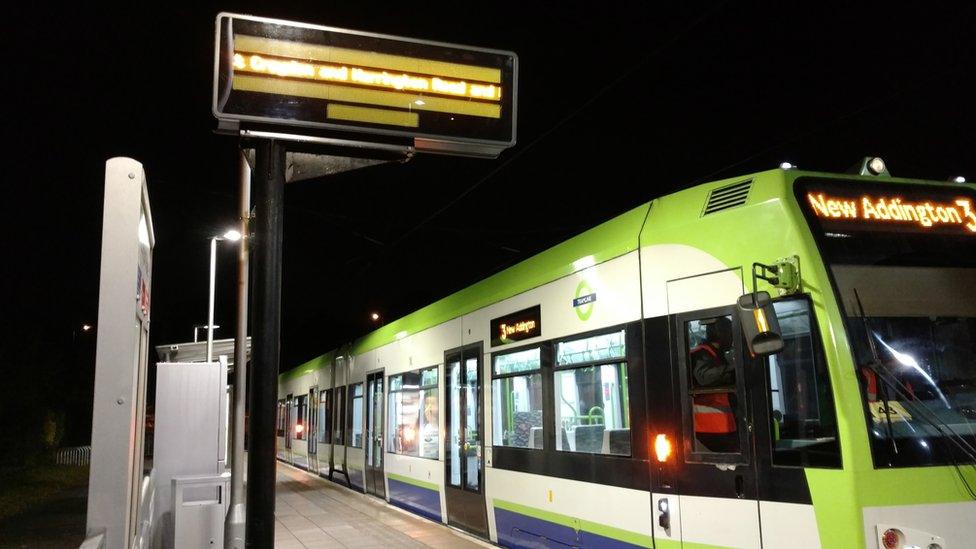Croydon Tram derailment: Definitive answers could be a while
- Published
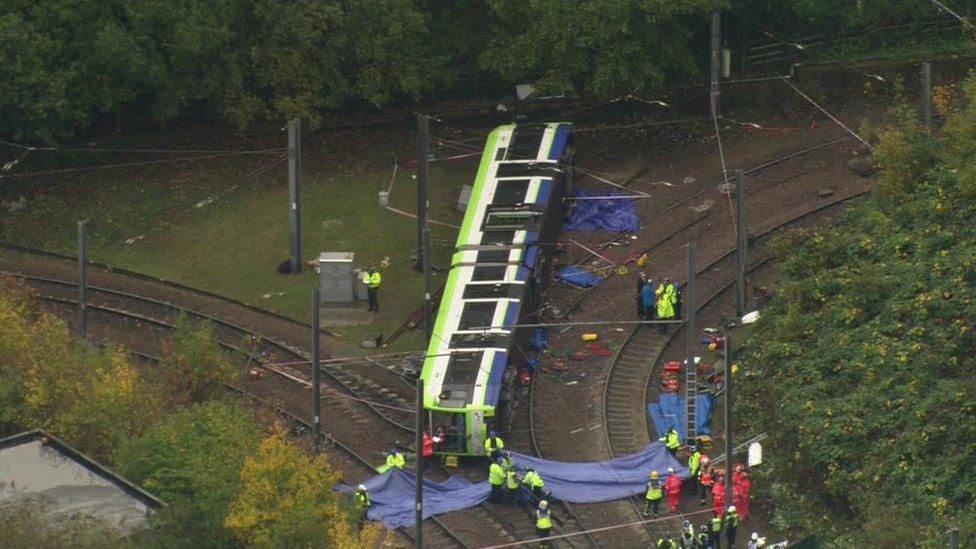
British Transport Police has arrested the driver
It would have been cold, windy, wet and still dark as the commuters got onto the Croydon tram at about 06:00.
This was an everyday commute that passengers had probably done many times. The tram was busy.
Unfortunately we now know what happened 10 minutes later on a tight bend heading into Sandilands tram station.
Seven people died and 51 were injured in the worst tram disaster in the UK since 1917.
Commentators have told me that excluding terrorist attacks and fire, it is the worst disaster on London transport since the Moorgate Tube crash in 1975.
As yet, we are still waiting to find out why and what happened. There are many questions.
At the moment there seem to be two investigations running in parallel.

The victims of the crash were (l-r) Mark Smith, Dane Chinnery, Phil Seary and Dorota Rynkiewicz

Philip Logan (left) Donald Collett (centre) and Robert Huxley (right) also died in the crash
The British Transport Police are running the criminal investigation. It has confirmed they are looking at reports the driver blacked out or fell asleep.
He has has been arrested and released on bail.
They are also looking at previous reports of speeding on that corner. Tram drivers have told me the corner is known as "triangle corner" and it is well-known.
It has a 12mph speed limit but in the tunnel before the bend, it is 50mph meaning the drivers only have a short period to reduce speed.
The Rail Accident Investigation Branch (RAIB) is looking at the technical side of the crash. It has already said the tram was going too fast on the bend - the crucial question is why?
It will publish a preliminary report this week, which could make "urgent safety recommendations" for tram operation in London.

Unions have said the bend may have to be re-designed and until we know the facts behind the crash, people should not be looking to apportion blame.
Trams do have safety features like the "dead man's handle" which stops the tram if the driver is incapacitated/.
But they do not have safety features like speed limiters or a mechanism to stop them if they go through red lights.
Unlike many London Underground lines the speed is not controlled centrally but by the driver.
Now Brian Cooke, a former Transport for London board member, thinks safety restrictions on more isolated parts of the track should be considered.
He also wants speed cameras above fast sections of track that cut out the power if trams break the speed limit.
Community devastated
What was very striking in Croydon is how it has left this community bewildered and reeling.
I spoke to countless people who could not comprehend what had happened on their tram, which has a very particular place in the part of south London.
Introduced 16 years ago, partly because the borough does not have any Tube stations, the trams are very popular and are used by about 27m passengers a year.
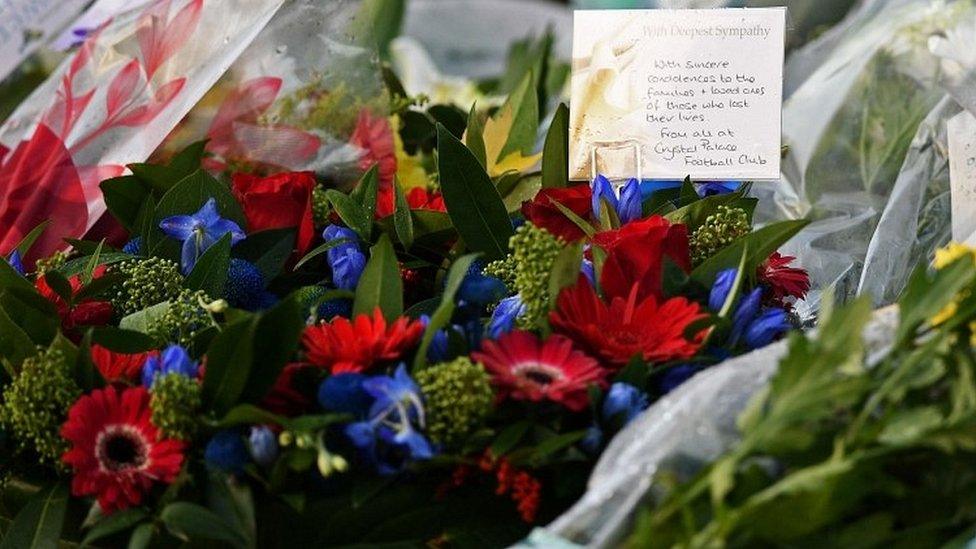
Crystal Palace FC left tributes near to the crash site as some of the victims were fans
Many of those who died came from New Addington, a large tightly-knit and somewhat remote housing estate, that for many years had to rely on a patchy bus service.
The arrival of the tram in 2000 improved things.
But the community there has now been devastated.
I have spoken to people who said they warned the authorities about the tight corner and drivers going too fast on it.
The full RAIB report could take a long time - I've been told it may take at least nine months - so it could be some time before the grieving families and these communities get the answers they so desperately want.
- Published14 November 2016
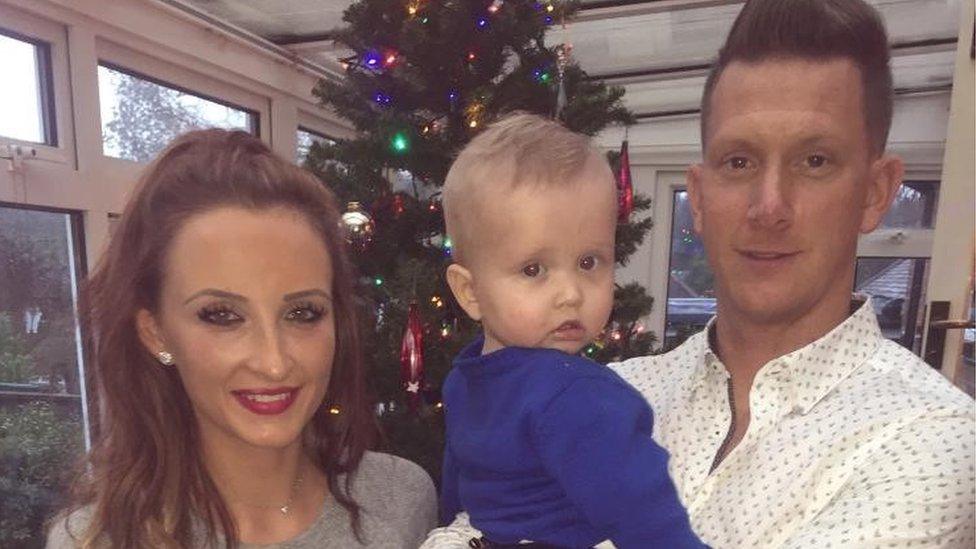
- Published9 November 2016
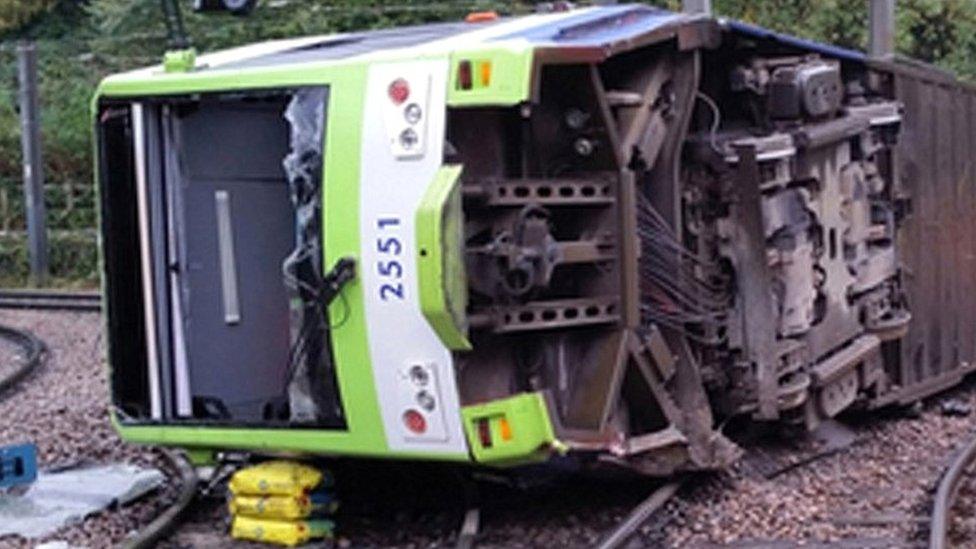
- Published12 November 2016
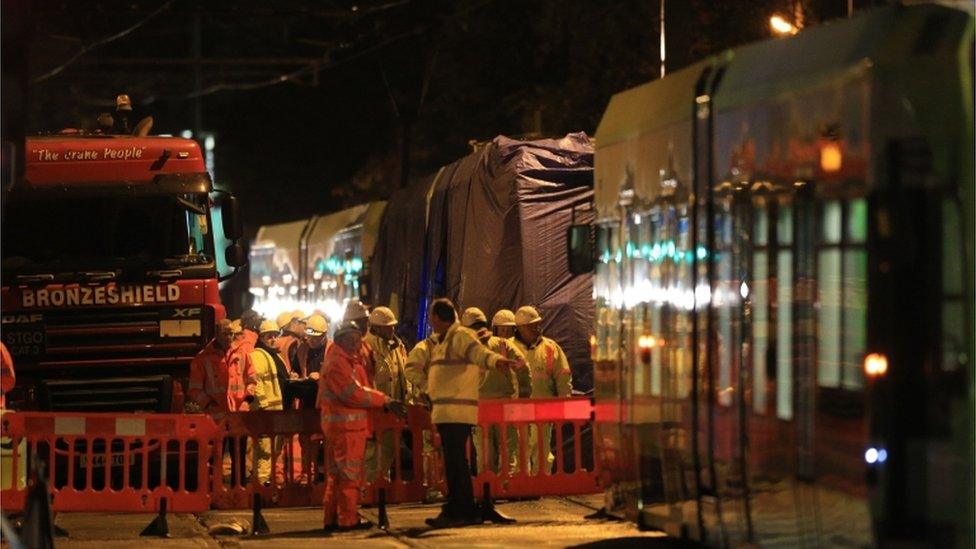
- Published13 November 2016

- Published13 November 2016
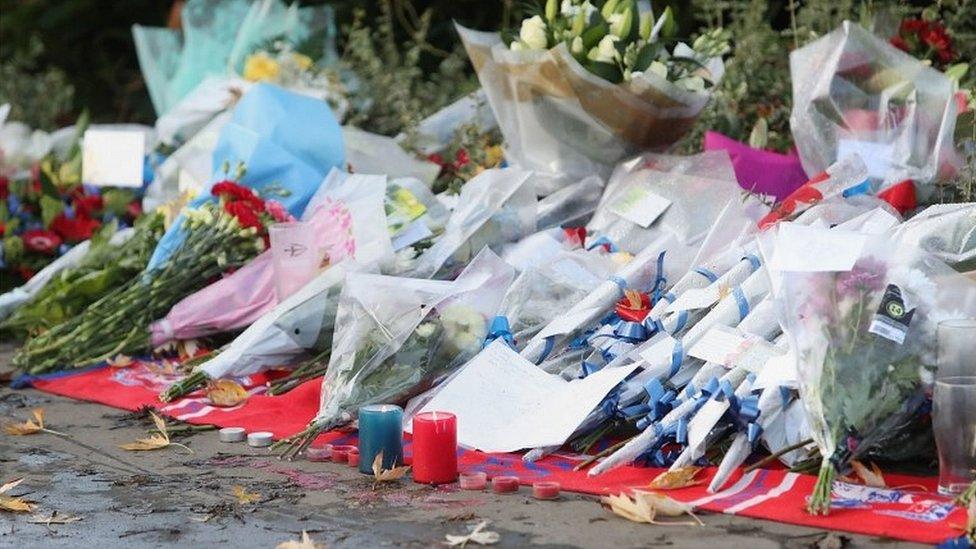
- Published11 November 2016
